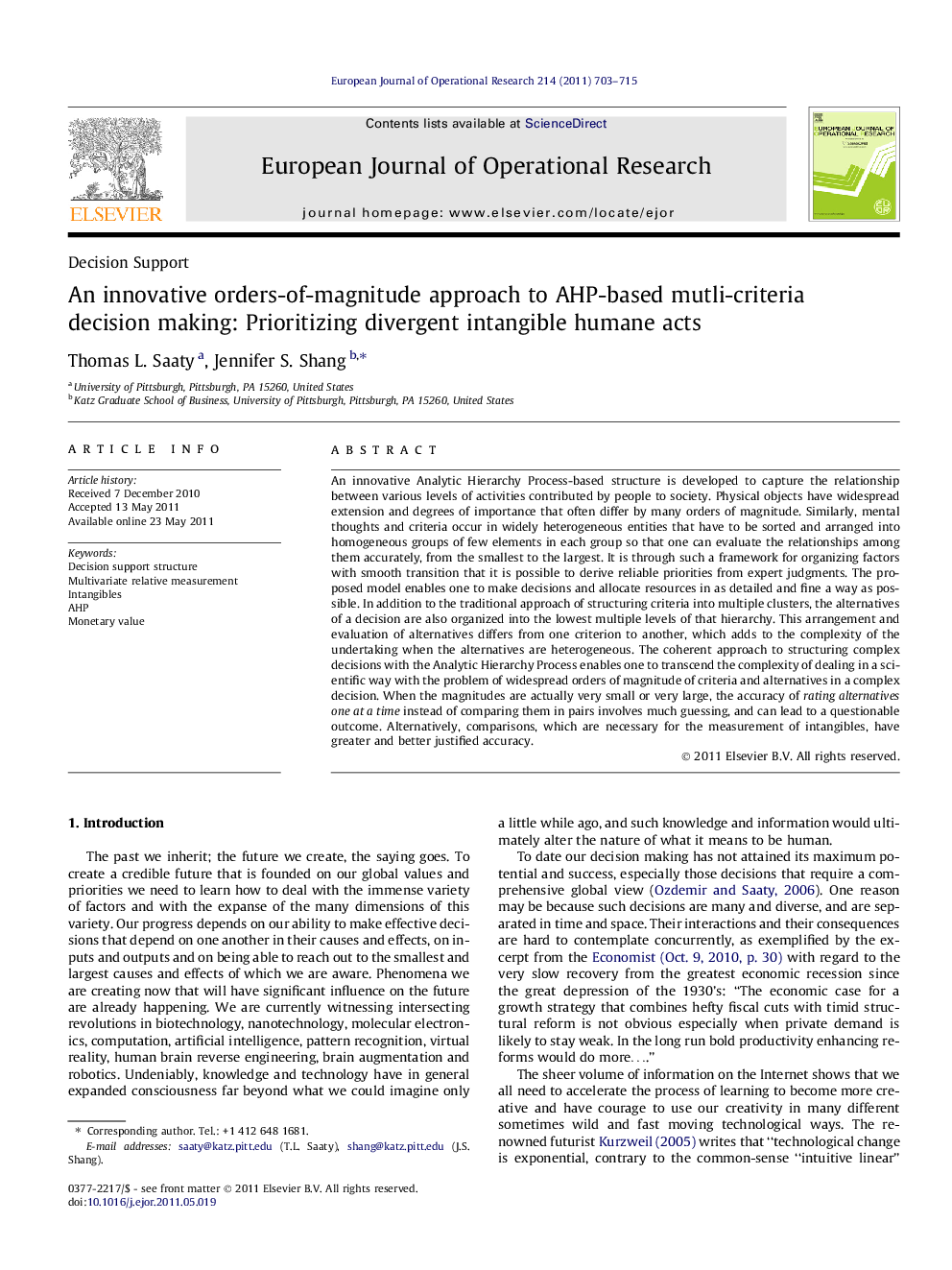| Article ID | Journal | Published Year | Pages | File Type |
|---|---|---|---|---|
| 476937 | European Journal of Operational Research | 2011 | 13 Pages |
An innovative Analytic Hierarchy Process-based structure is developed to capture the relationship between various levels of activities contributed by people to society. Physical objects have widespread extension and degrees of importance that often differ by many orders of magnitude. Similarly, mental thoughts and criteria occur in widely heterogeneous entities that have to be sorted and arranged into homogeneous groups of few elements in each group so that one can evaluate the relationships among them accurately, from the smallest to the largest. It is through such a framework for organizing factors with smooth transition that it is possible to derive reliable priorities from expert judgments. The proposed model enables one to make decisions and allocate resources in as detailed and fine a way as possible. In addition to the traditional approach of structuring criteria into multiple clusters, the alternatives of a decision are also organized into the lowest multiple levels of that hierarchy. This arrangement and evaluation of alternatives differs from one criterion to another, which adds to the complexity of the undertaking when the alternatives are heterogeneous. The coherent approach to structuring complex decisions with the Analytic Hierarchy Process enables one to transcend the complexity of dealing in a scientific way with the problem of widespread orders of magnitude of criteria and alternatives in a complex decision. When the magnitudes are actually very small or very large, the accuracy of ratingalternativesoneatatime instead of comparing them in pairs involves much guessing, and can lead to a questionable outcome. Alternatively, comparisons, which are necessary for the measurement of intangibles, have greater and better justified accuracy.
► Develop AHP structure, capture relationship between various altruistic activities. ► Structure diverse elements in a hierarchy, and prioritize criteria and sub-criteria. ► Through comparisons, we arrange alternatives into homogeneous clusters. ► Synthesize priorities using pivot from one homogeneous cluster to an adjacent one. ► Relate widespread orders of magnitude of criteria and alternatives.
